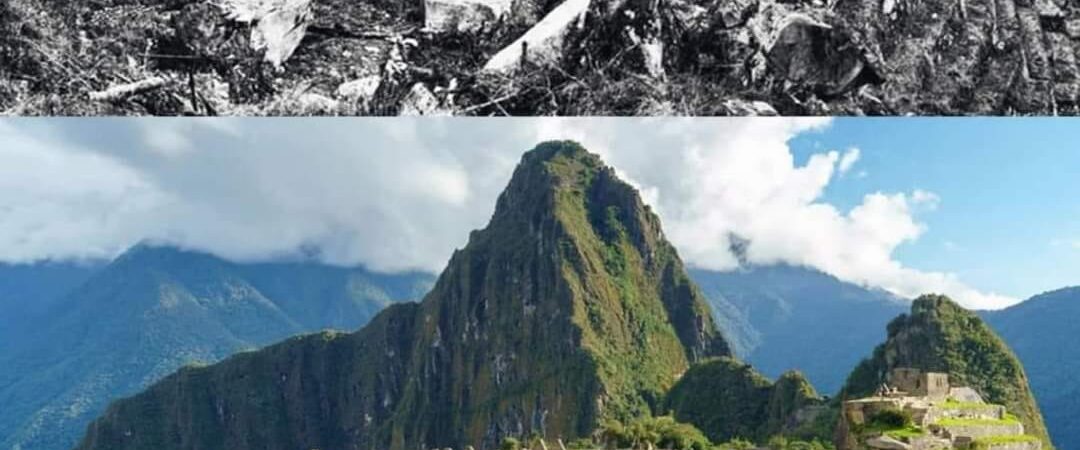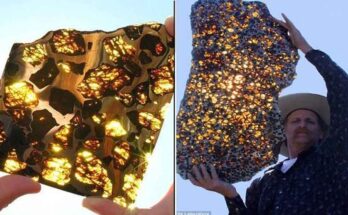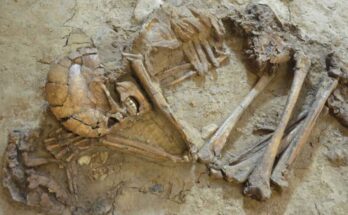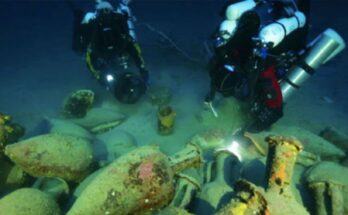**Machu Picchu**, the renowned Incan citadel nestled in the Peruvian Andes, is a symbol of ancient engineering and cultural heritage. The site has evolved significantly since its “discovery” by American explorer Hiram Bingham in 1911. To understand this transformation, it’s essential to compare the initial photographs taken by Bingham with the present-day site.
### **Discovery and Initial Photographs (1911)**
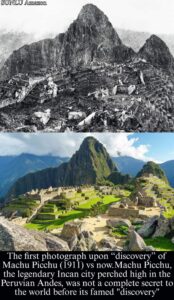
1. **Context of Discovery**:
– **Pre-Existing Knowledge**: Prior to Hiram Bingham’s expedition, Machu Picchu was known to local Quechua-speaking farmers and indigenous communities. These locals lived in the surrounding areas and occasionally used the terraces for agriculture. However, the site was relatively unknown to the outside world and remained cloaked in dense jungle.
– **Bingham’s Expedition**: Hiram Bingham, an American historian and explorer, arrived at Machu Picchu in July 1911. He was guided to the ruins by local farmers, particularly a Quechua-speaking resident named Melchor Arteaga. Bingham’s visit was not an entirely uncharted discovery but rather a rediscovery and formal introduction of the site to the global stage.
2. **Initial Photographs**:
– **Condition of the Site**: The initial photographs taken by Bingham and his team depicted Machu Picchu in a state of significant overgrowth. The site was enveloped by dense jungle, with the ruins largely obscured by thick vegetation, moss, and underbrush. This lush environment created a dramatic contrast to the site’s eventual appearance after extensive restoration.
– **Photographic Documentation**: Bingham’s photographs show the city as a mysterious and enigmatic place. The images often captured the grandiosity of the site’s architecture, such as the iconic terraced slopes and stone structures, but also highlight the encroaching vegetation that partially obscured the ruins. These early photographs served to generate international intrigue and interest in Machu Picchu.
3. **Significance of the Discovery**:
– **Global Attention**: Bingham’s publication of his findings, including photographs and detailed descriptions, sparked widespread international interest. His work, which included articles and books such as “The Lost City of the Incas,” brought Machu Picchu into the global consciousness, leading to a surge in archaeological and scholarly interest.
– **Initial Research**: Bingham’s expedition led to significant archaeological research and the beginning of formal excavation efforts. While his work was instrumental in revealing the site to the world, it also spurred a broader interest in Incan history and culture.
### **Transformation and Present Day**
1. **Excavation and Restoration**:
– **Early Efforts**: Following Bingham’s discovery, extensive excavation and restoration work began. This work was aimed at clearing away vegetation, stabilizing structures, and documenting the site’s layout and features. The initial efforts were undertaken by various archaeologists and conservationists, including teams from Yale University and the Peruvian government.
– **Modern Preservation**: In the decades since, Machu Picchu has undergone continuous preservation and restoration efforts. This includes the development of controlled access paths, conservation of the stonework, and measures to manage the impact of tourism. Modern techniques and technology have enhanced the ability to preserve the site while accommodating large numbers of visitors.
2. **Current State of the Site**:
– **Cleared and Preserved**: Today, Machu Picchu is a UNESCO World Heritage Site and one of the most visited tourist destinations in the world. The once-overgrown ruins have been carefully cleared and preserved, revealing a stunningly well-maintained site that showcases the ingenuity of Incan architecture and urban planning.
– **Tourism and Access**: The site now features well-defined pathways, viewing platforms, and visitor facilities to manage the large influx of tourists. These developments are designed to protect the site while ensuring that visitors can appreciate its historical and architectural significance.
3. **Visual Comparison**:
– **From Overgrowth to Clarity**: Comparing Bingham’s initial photographs to present-day images reveals a striking transformation. The early photos highlight the dense vegetation and partially obscured structures, while contemporary images showcase a meticulously maintained site with clear views of the terraced fields, temples, and residential areas.
– **Architectural Highlights**: Modern photographs often emphasize the architectural marvels of Machu Picchu, such as the Intihuatana stone (ritual stone associated with astronomy), the Temple of the Sun, and the Inca Bridge. These features are now prominently visible and celebrated as part of the site’s rich heritage.
### **Legacy and Cultural Impact**
1. **Global Recognition**:
– **Cultural Significance**: Machu Picchu is not only a testament to Incan civilization but also a symbol of cultural heritage and historical preservation. Its recognition as a UNESCO World Heritage Site underscores its global importance and the need for ongoing conservation efforts.
– **Educational and Inspirational**: The site continues to inspire scholars, historians, and tourists alike. Its preservation offers valuable insights into Incan society and provides a profound connection to the ancient world.
2. **Continued Efforts**:
– **Sustainability**: Ongoing efforts focus on balancing tourism with conservation. Initiatives include managing visitor numbers, implementing sustainable practices, and preserving the integrity of the site for future generations.
– **Research and Education**: Modern research continues to uncover new aspects of Machu Picchu’s history and significance. Educational programs and exhibitions further enrich the public’s understanding of the site and its place in world history.
In summary, the evolution of Machu Picchu from its overgrown state in 1911 to its current preserved condition illustrates the significant impact of archaeological discovery and conservation efforts. The contrast between Bingham’s initial photographs and today’s images highlights the transformation of Machu Picchu from a hidden ruin into a globally recognized cultural treasure.
***Do you want to see more posts like this? Well, today we are continuing our fundraising drive to reach our goal. All funds raised, go right back into research. If you are able, please help support our group today. Every little bit helps!
